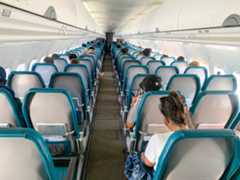Boeing 717 (Jet transport)
Enlarge textShrink textTopic
- Save successfulThe item can be found in your Personal ZoneשגיאהLog in to your account to save
- Work cat.: Becher, T. Douglas twinjets: DC-9, MD-80, MD-90 and Boeing 717, 2002.
- Wikipedia, July 19, 2012(The Boeing 717 is a twin-engine, single-aisle jet airliner; the airliner was designed and marketed by McDonnell Douglas as the MD-95, a third-generation derivative of the DC-9; McDonnell Douglas and Boeing merged in 1997 prior to production, and the first planes entered service in 1999 as the Boeing 717)
+departing+Perth+Airport.jpg&f=jpg&w=240)








The Boeing 717 is an American five-abreast narrow-body airliner produced by Boeing Commercial Airplanes. The twin-engine airliner was developed for the 100-seat market and originally marketed by McDonnell Douglas in the early 1990s as the McDonnell Douglas MD-95 until the company merged with Boeing in August 1997. It was a shortened derivative of McDonnell Douglas’ successful airliner, the MD-80, and part of the company's broader DC-9 family. Capable of seating up to 134 passengers, the 717 has a design range of 2,060 nautical miles [nmi] (3,820 km; 2,370 mi). It is powered by two Rolls-Royce BR715 turbofan engines mounted at the rear of the fuselage. The first order for the airliner was placed with McDonnell Douglas in October 1995 by ValuJet Airlines (later AirTran Airways). With the 1997 merger taking place prior to production, the airliner entered service in 1999 as the Boeing 717. Production of the type ceased in May 2006 after 155 were delivered, with 99 examples remaining in service as of November 2024. The type has not been involved in a hull loss or fatal incident.
Read more on Wikipedia >